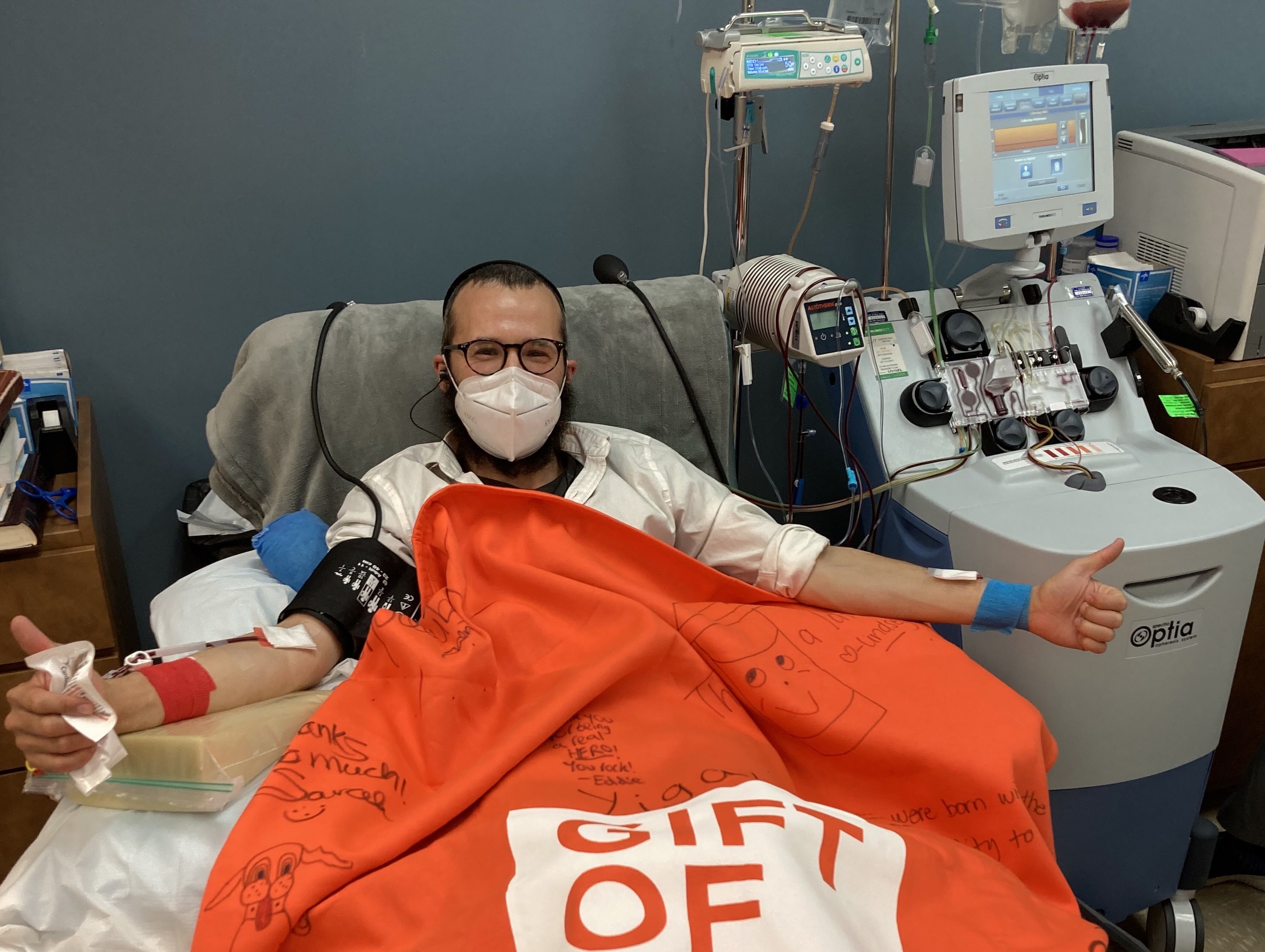

Everyone’s familiar with blood donation. But most people don’t know that blood marrow stem cells can be donated in much the same way blood is donated.
Gift of Life exists to increase awareness, build registries of people willing to donate, and connect willing donors with patients in desperate need of the life-saving cells.
In 2019, Chabad Santa Clara held a stem cell donor drive for Gift of Life, hosted by Lexus of Santa Clara. But Rabbi Yigal Rosenberg, head of Chabad Santa Clara, didn’t expect that less than a year later he would be donating stem cells for a 40-year-old patient in San Bernardino.
Rosenberg wasn’t expecting to be called for a donation right after the 2019 event.
“I found that perplexing,” Rosenberg says, “because as the coordinator of the event I did not actually have a chance to do a cheek swab.” That’s the preliminary screening for immune system factors.
“It turns out the match came from a registered entry 10 years ago,” he continues, “during my studies at the Rabbinical College of America in Morristown New Jersey.”
Life-Saving Cells
Produced in the bone marrow, stem cells circulate in the blood stream and can make all other blood cells. For many blood cancers as well as some immune system disorders and inherited conditions, bone marrow or blood stem cell transplants are the only therapies that offer hope for patients.
But matching donors and patients depends on matching specific immune factors, Human Leukocyte Antigens (HLAs). There are thousands of possible HLA combinations, so making a match is often difficult because even within families only 30 percent of patients find a match from a brother or sister. The others have to search the worldwide registry for a match.
Currently, the HLA registry has data for 31 million people — a tiny portion of the world’s population. Immune factors are inherited, so shared ethnicity increases the likelihood the best chances of finding matching donors.
While almost all U.S. patients of European ancestry find matches, those of Latin, Asian and African ancestry have less than a 50 percent chance of finding one, according to Gift of Life — for African Americans that chance is only 25 percent.
Age and sex matter in stem cell donations. Transplants have a higher success rate when donors are between 18 and 45 years old because success rates are higher than for other demographics. Men generate more stem cells because of their generally larger size and larger bones.
If the initial screen shows a match, potential donors will undergo further tests. This testing needs to take place where the recipient is being treated, so donors may have to travel — Gift of Life pays the expenses.
If tests show a good match, then donors will receive a drug that encourages stem cells from the bone marrow to enter the blood stream. The donation itself takes several hours.
“One of the most basic principles in Jewish law is that human life comes first,” said Rosenberg. “The laws of the Torah place the sacredness of life before all else.”
One of the greatest acts of charity is to give without knowing to whom one gives,” said Rosenberg. The Hebrew word for this charity, is tzedakah, and embodies not just giving out of a feeling of kindness, but from an [abiding] in divine love. And as such it blesses both the giver and recipient.
“I can’t begin to describe what a powerful experience this has been,” Rosenberg wrote on his Facebook page — while he was hooked up for the donation and typing with his left hand.
“It’s truly remarkable when one encourages others to do good, the opportunity comes right back at you, in a miraculous way,” he said, adding, “I will see to it that at least 100 additional bone marrow donors be added to registry”
For more information about Gift of Life, visit giftoflife.org. If you want to register, email Rabbi Rosenberg at rabbi@jewishclara.org.
Bay Area artist Nathan Oliveira (1928-2010) described himself as an abstract artist whose work had…
The California Highway Patrol's so-called "surge" operations in Oakland have netted nearly 400 arrests so…
James Williams wasn’t just Santa Clara’s first African American citizen and one of the first…
Can you spell deja vu? The battle over the best way to teach children how…
A new Sunnyvale rideshare shuttle will make it easier to get around the city’s Peery…
Former city council member and long-time active member of the Santa Clara community, Debi Davis, passed…